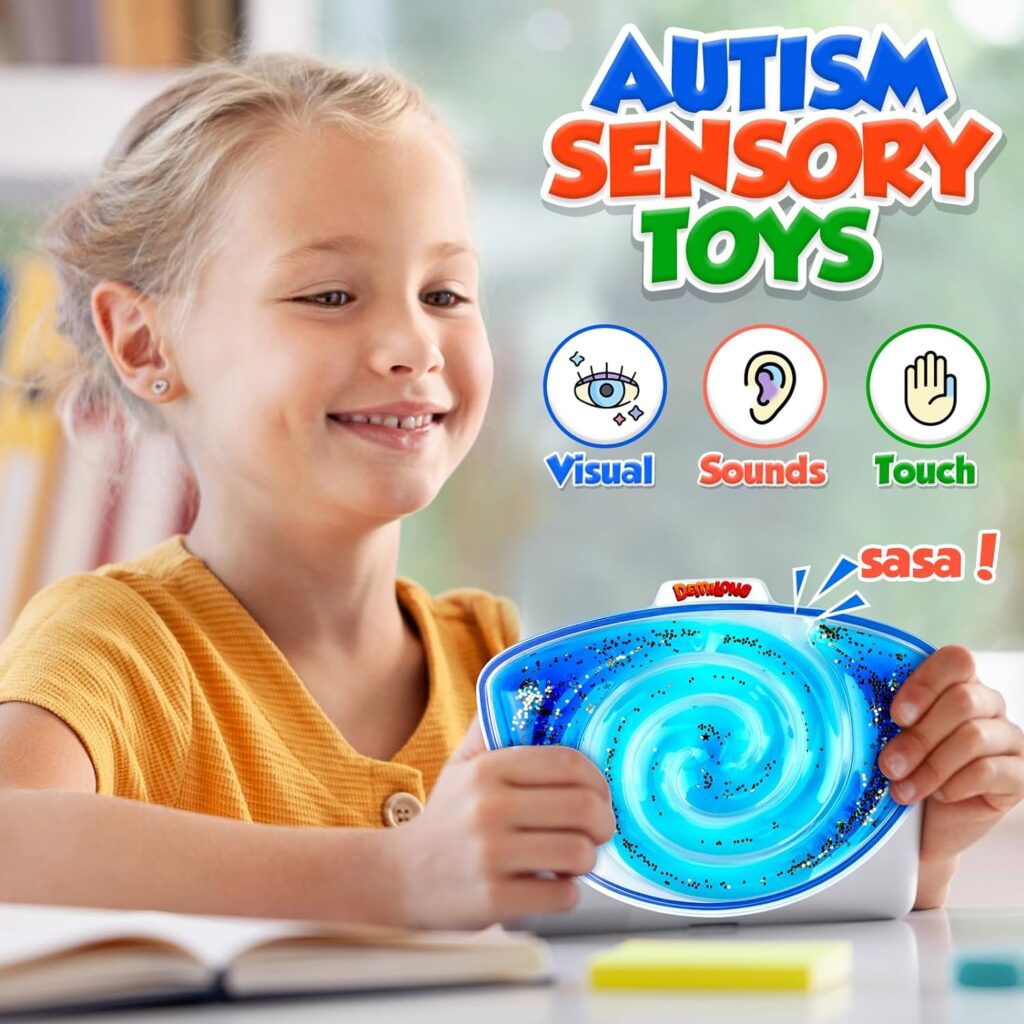As a parent or caregiver, you’ve likely noticed how young children are naturally drawn to toys with vibrant colors, unique textures, or intriguing sounds. Whether it’s a squishy ball, a musical instrument, or a toy with tactile surfaces, these playthings seem to captivate preschoolers almost instantly. But have you ever wondered what makes them so appealing? More importantly, how do these toys contribute to a child’s overall development? Let’s explore the answers while diving into the world of sensory toys preschool play and learning.
What Are Sensory Toys?
At their core, sensory toys are designed to engage a child’s senses—touch, sight, sound, smell, and even taste. These toys can range from timeless favorites like modeling clay and water beads to modern innovations like light-up cubes and textured puzzles. The purpose of these toys is to create hands-on experiences that not only entertain but also foster essential developmental skills.
Take, for example, toys that focus on touch. Textured balls, kinetic sand, or soft fabrics introduce children to various tactile sensations, helping them understand and categorize their environment. Similarly, toys that incorporate light and sound, like color-changing globes or musical instruments, stimulate visual and auditory senses, encouraging curiosity and exploration.
Why Are Sensory Toys Important?
To understand the role sensory toys play, it’s important to recognize the rapid rate at which preschoolers’ brains develop. During these formative years, the brain is busy creating neural pathways that support learning, memory, and problem-solving. Engaging sensory experiences help to strengthen these connections, making them invaluable tools for early childhood development.
But the impact of sensory toys goes beyond brain development. From enhancing motor skills to supporting emotional growth, these toys offer well-rounded benefits that set the foundation for lifelong learning.
Sensory Toys Benefits for Preschoolers
1. Encouraging Cognitive Growth
Sensory toys foster a sense of exploration and discovery. For instance, when a child plays with a toy that changes shape or makes noise, they begin to understand concepts like cause and effect. These moments of curiosity lay the groundwork for critical thinking and problem-solving skills.
Moreover, sensory play encourages focus and concentration, which are essential for preschoolers learning to navigate their world. A child captivated by the feel of kinetic sand or mesmerized by the glow of a light-up toy is not only having fun but also building their capacity for sustained attention.
2. Supporting Motor Skills Development
Fine motor skills are vital for tasks like writing, buttoning shirts, or tying shoelaces, and sensory toys provide the perfect practice. Activities like squeezing a stress ball, manipulating play dough, or stacking textured blocks require precise hand movements, strengthening coordination and dexterity.
Gross motor skills, too, can benefit from sensory play. Jumping into foam pits or balancing on sensory stepping stones helps children build strength and coordination, making sensory toys versatile tools for physical development.
3. Promoting Emotional and Social Well-Being
Sensory toys also offer an outlet for big emotions. Preschoolers, who may not yet have the words to express how they feel, can use these toys to work through frustration, anxiety, or excitement. For example, squeezing a stress ball can be calming, while water play can have a soothing effect on an overstimulated child.
Additionally, sensory play encourages social interactions. Sharing a sensory bin or collaborating on a tactile activity helps children practice taking turns, communicating, and working together—all critical skills for future success in school and beyond.
Choosing the Right Sensory Toys
When selecting sensory toys, it’s essential to consider the specific needs and interests of the child. For example:
- Touch: Look for textured balls, modeling clay, or sensory bins filled with varied materials.
- Sound: Choose toys like musical instruments or those that produce calming sounds.
- Sight: Opt for light-up or color-changing toys that engage visual senses.
Additionally, consider the toy’s versatility. Many sensory toys can engage multiple senses at once, making them excellent value for their developmental impact.
Sensory Toys as Tools for Special Needs
Sensory toys can be particularly helpful for children with sensory processing challenges, autism, or ADHD. These toys provide a safe way for children to explore their sensory needs while promoting self-regulation. For instance, weighted blankets or fidget toys can offer comfort to children who struggle with overstimulation, helping them feel more grounded and focused.
According to experts, incorporating sensory toys into a child’s routine can support both their learning and emotional well-being, making these toys a valuable resource for educators and parents alike.
Final Thoughts
Sensory toys are much more than just playthings; they’re tools for learning, growth, and connection. By engaging a child’s senses, these toys contribute to cognitive, physical, and emotional development, making them an essential part of any preschooler’s life.
So, whether you’re a parent looking to enrich your child’s playtime or an educator seeking ways to enhance classroom learning, sensory toys are a powerful resource. With their ability to captivate attention, improve focus, and foster key developmental skills, they truly are a must-have for the preschool years.

